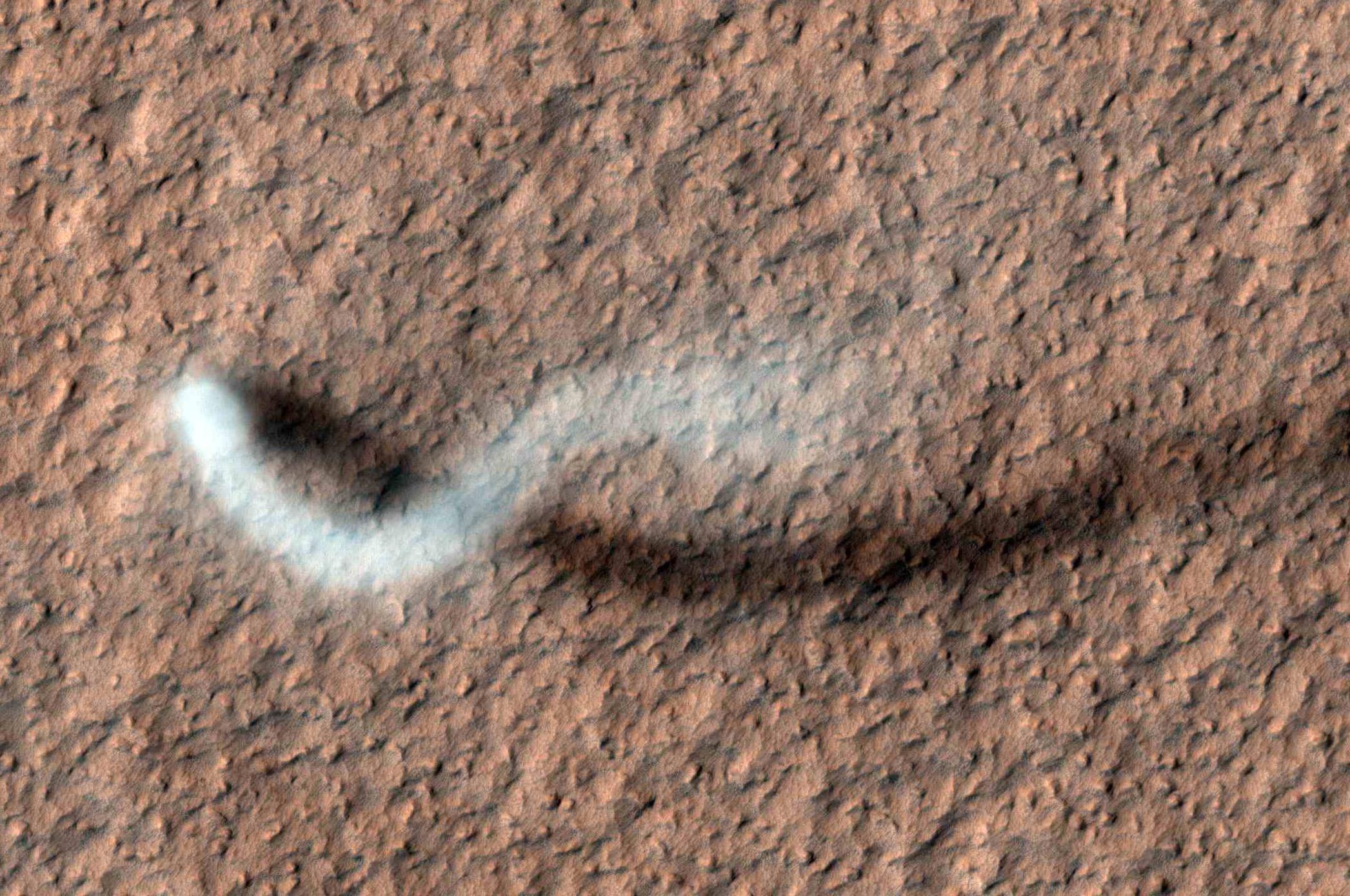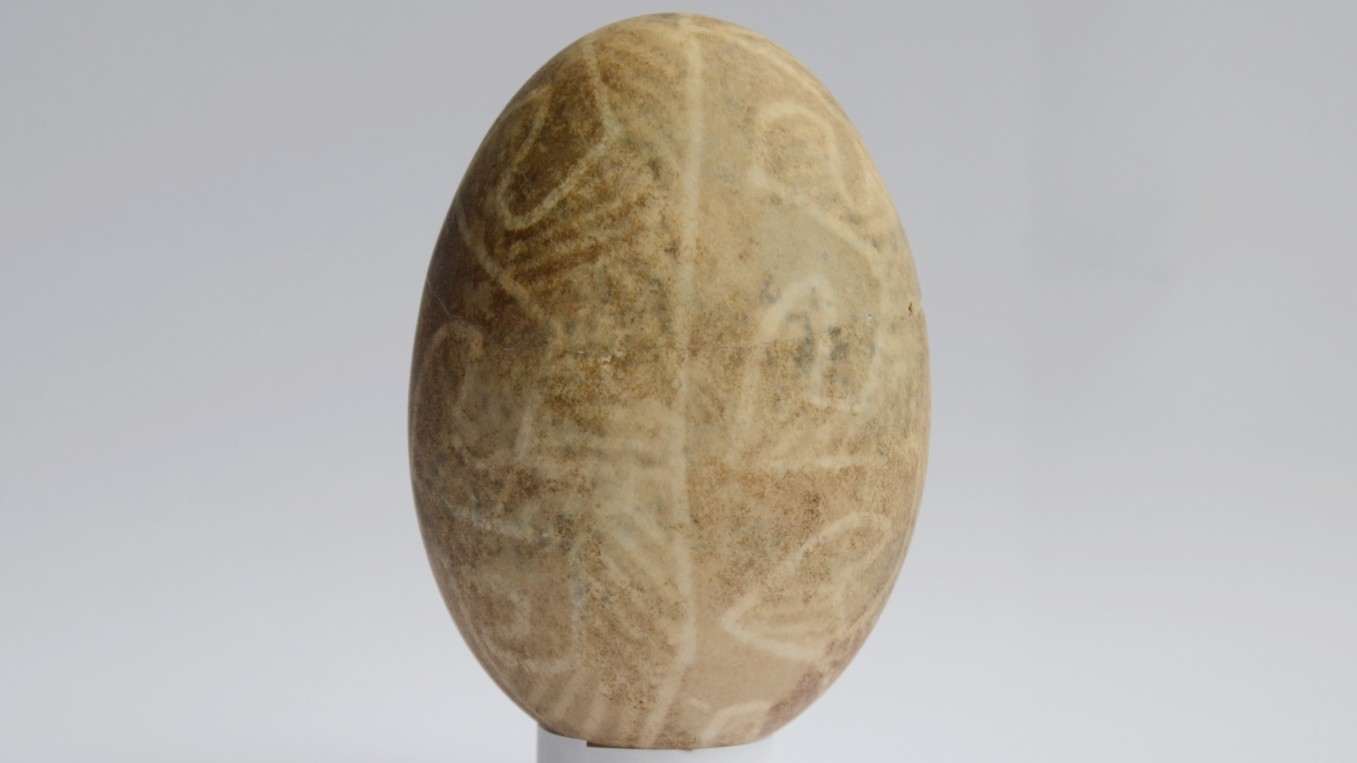Martian dust storms may spark electric purple glow
Colliding dust particles might produce an eerie effect similar to "St. Elmo's fire" on Earth.

From its new home on the Red Planet, NASA's Perseverance rover may soon have a front-row view of an otherworldly light show.
When the next seasonal dust storm passes through Jezero crater (where the rover landed on Feb. 18), the air around the rover could crackle and glow with purple light from the collision of statically charged dust particles, a new study suggests.
These colorful sparks would almost certainly be too small and weak to pose a threat to Perseverance, or to any hypothetical humans who alight on Mars in the future, said lead study author Joshua Méndez Harper, a geologist from the University of Oregon. However, the presence of electrostatic forces on Mars could have wide-ranging implications for how scientists understand the Red Planet's atmosphere and its potential to foster life, Méndez Harper said.
Related: Here's the last thing NASA's Opportunity rover saw before 'lights out'
"Small sparks may catalyze the production of chemicals that may [impact] the presence of organic materials," Méndez Harper told Live Science in an email. "A recent paper suggested that perchlorates — compounds toxic to many forms of life — may be generated by small-scale discharges."
The buzz about Mars
The new study, set to be published in the March issue of the journal Icarus, aims to decisively answer a question that has buzzed through the scientific community for half a century: Can colliding particles whipped up by high-speed winds in Mars' atmosphere spark electricity?
This process is known as triboelectric charging — that is, electricity produced by the friction of colliding particles or surfaces. On Earth, you can generate a small triboelectric spark, or static electricity, in your bedroom by rubbing your socks on the carpet and then touching a metal doorknob (youch!). Or, for a grander demonstration, you can marvel at an apocalyptic lightning storm bolting through the ash column of an erupting volcano — the triboelectric result of ash particles colliding in the air.
Sign up for the Live Science daily newsletter now
Get the world’s most fascinating discoveries delivered straight to your inbox.

On Mars, however, it's unclear whether triboelectric charging happens at all. Because Mars has much lower atmospheric pressure than Earth does, it's unlikely that powerful charges could build up there, Méndez Harper said. Studies dating back to the 1970s have tried to simulate Martian dust storms on Earth by shaking up volcanic ash in small, low-pressure containers. Sometimes, those particles (which have similar compositions to Martian dust) do spark -- but according to the new Icarus paper, these studies may be fundamentally flawed.
"These works did not account for the possibility of charging arising from the interaction between simulated Martian dust and experimental containers enclosing it," Méndez Harper said. "The containers often had wildly different chemistries — plastic, metal or glass — that could have produced the observed electrical effects."
In other words, in past studies, any observed sparks may have actually been between a dust particle and the side of the container enclosing it, rather than between two simulated Martian dust particles. These containers are made of stuff that doesn't exist on Mars, meaning the experiments don't really teach us anything about what happens within the Red Planet's dust storms.
Méndez Harper and his colleagues tried to correct this experimental design flaw in their new study.
Similar to previous experiments, the team used volcanic ash grains (from Mexico's Xitle volcano, which erupted about 1,700 years ago) to simulate Martian dust particles, and enclosed them in a glass tube under conditions simulating the Martian atmosphere. Unlike prior experiments, however, the team used jets of carbon dioxide to stir the grains into a "fountain" of colliding particles that never touched the container wall.
The team found that the colliding particles did result in small triboelectric sparks, even when those dust grains did not come into contact with the container. For the researchers, then, this study provides the first reliable experimental evidence of triboelectric charging on Mars.
Red planet, purple glow
What would those charges look like? It's hard to say. Although the researchers detected shocks in their Martian dust fountain electronically, they observed no visual effects resulting from the collisions. Given the low atmospheric pressure on Mars, it's unlikely that even the fiercest dust storms would ripple with lightning the way terrestrial volcanoes or thunderclouds do.
"A more likely possibility is that Martian dust storms display innumerable small sparks — called streamer discharges and glow discharges," Méndez Harper said. These small-scale electrical effects could cause Martian dust clouds to glow purple; on Earth, sailors sometimes see a similar glow — known as St. Elmo's fire — when the masts of ships scrape through a strong electric field.
The Perseverance rover may be able to obtain the first visual proof of the phenomenon on Mars the next time a dust storm sweeps through Jezero crater — or possibly even sooner, Méndez Harper said.
"Percy" is equipped with a small helicopter named Ingenuity; when the copter takes off or lands, its whirring blades may stir up enough dust to "produce visible discharges" near the rover, Méndez Harper said.
Don't be shocked if you see it.
Originally published on Live Science.

Brandon is the space/physics editor at Live Science. His writing has appeared in The Washington Post, Reader's Digest, CBS.com, the Richard Dawkins Foundation website and other outlets. He holds a bachelor's degree in creative writing from the University of Arizona, with minors in journalism and media arts. He enjoys writing most about space, geoscience and the mysteries of the universe.










